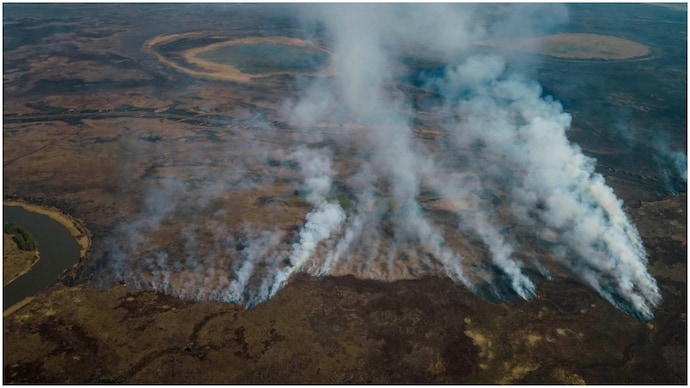Effects of climate, agriculture, air quality combine to impact public health: Study
A new research study has explored the complex and multiple interactions between climate, air quality and agriculture to widen the understanding of the impact of anthropogenic activities on combined human health.

A new research paper has explored the complex and multiple interactions between climate, air quality and agriculture to widen the understanding of the impact of anthropogenic activities on combined human health. In the study, published in the globally acclaimed ‘One Earth’ journal, scientists proposed an integrated systems lens to characterise collective health risks of environmental changes induced by human actions. This helps to evaluate policies and interventions, and their unintended consequences on the health of citizens.
In collaboration with researchers from Columbia University, University of Washington, Boston University, and the University of Delaware, Ashwini Chhatre, an associate professor of Public Policy in Indian School of Business (ISB), led the research in South Asia
The paper, titled ‘A systems lens to evaluate the compound human health impacts of anthropogenic activities’, drew on hundreds of research studies on climate change, air quality, agriculture, and public health to propose a scientific outlook that connects health risks with simultaneous environmental changes driven by human actions. Such a systems approach can greatly facilitate policy development and decision-making, especially for South Asian and other developing countries, the paper said.
Using examples from India, the scientists emphasised the need for better tools and local and high-resolution data on health, weather, emissions, air pollution, and land use to evaluate human and environmental impacts on public health. India, the research paper said, was one of the most vulnerable regions to environment-related health hazards, owing to its high population density, high poverty rates, severe food insecurity, and over-reliance on agriculture.
ALSO READ: Climate change could see 200 million move by 2050: Report
“Late autumn is the pollution season in North India, and also brings in vicious debates in our society about who and what are contributing to it. The study points out how useful and effective policy responses need to take multiple factors and interactions into account, and highlights the need to avoid simplistic explanations,” said Professor Chhatre.
He emphasised his point with an illustration from the study: In Punjab and Haryana, escalated levels of particulate matter and nitrogen dioxide had been observed due to stubble burning at the end of Kharif season (monsoon), but, on the other end, the increased presence of ozone due to industrial air pollution has been a major cause for reducing crop productivity like in wheat, rice, cotton and soybeans in all regions.
“Agricultural practices impact air quality, but air quality also impacts agriculture, all amplified by the human-induced climate effect. In complex human-environment systems, these evolving, multifaceted interactions must be factored into policymaking,” Professor Chhatre remarked.
Deepti Singh, one of the lead authors of the study, and Assistant Professor, University of Washington, informed, “We're offering a framework to assess the overall health impacts from multiple parts of Earth's natural systems, which are all changing at the same time because of human impacts.” These changes, she added, must be carefully and comprehensively scrutinised to drive effective policy changes at the country as well as global level. The authors expect that an integrated region-specific understanding of these interactions could support the decision-making and adaptation planning of countries and inform sustainable policy development.
The study has categorised health impacts into heat-related illnesses (such as exhaustion, heat strokes, and cardiovascular events), pollution-related illnesses (such as asthma, enhanced risk of lung cancer, chronic pulmonary diseases), and nutrition-related illnesses (such as anaemia in women of reproductive age, iron and zinc deficiency). The analysis linked different interactions between climate, agriculture, and air quality to specific health impacts to create a composite picture. It calls for the attention of policymakers to consider the diverse, dynamic and multi-fold inter-linkages in the human-environment system and approach public health through a comprehensive scientific lens.
ALSO READ: Three new heatwave hotspots emerge in India, huge population at risk: Study
